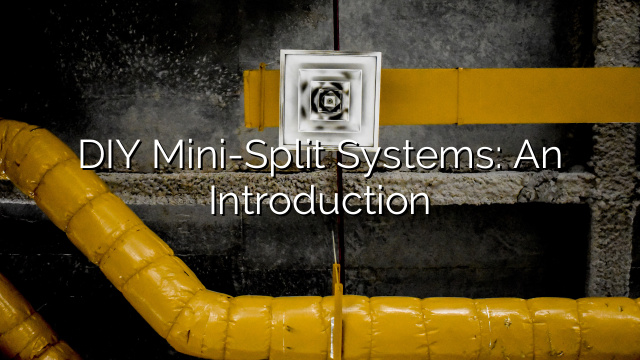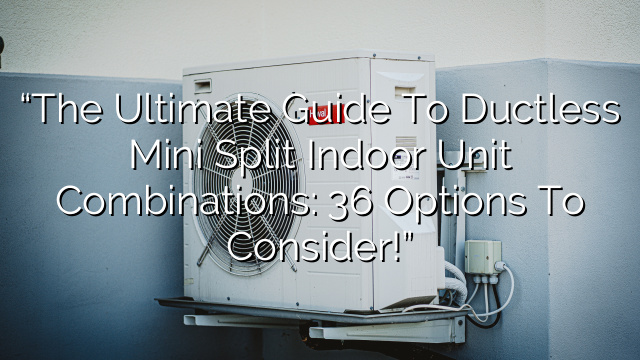What is a Ductless Mini Split System?
A ductless mini split system is a type of air conditioning system that does not require ductwork to distribute air throughout a building. Instead, it uses a system of indoor and outdoor units to cool or heat individual rooms or zones.
The system consists of an outdoor unit, which houses the condenser and compressor, and one or more indoor units, which contain the evaporator and air handler. The indoor units are typically mounted on a wall, ceiling, or floor and are connected to the outdoor unit using refrigerant lines and electrical wiring.
Advantages of Ductless Mini Split Systems
There are several advantages to installing a ductless mini split system in your home or office:
- Energy Efficiency: Ductless mini split systems are more energy efficient than central air conditioning systems because they do not lose cool air through ductwork. This can result in lower energy bills and reduced carbon emissions.
- Easy Installation: Ductless mini split systems are relatively easy to install compared to traditional air conditioning systems. They do not require extensive ductwork, making them a great option for older homes or buildings.
- Zoning Capability: Ductless mini split systems offer the ability to cool or heat individual rooms or zones separately. This allows for personalized comfort and energy savings.
- Improved Indoor Air Quality: Ductless mini split systems typically include air filtration systems that help remove allergens, dust, and other small particles from the air. This can lead to improved indoor air quality and a healthier living environment.
What is a DIY Mini-Split System?
A DIY mini-split system is a ductless mini split system that can be installed by the homeowner or a DIY enthusiast. These systems come with pre-charged refrigerant lines and quick-connect fittings, making installation easier and more convenient.
With a DIY mini-split system, you can save money on installation costs by doing it yourself. However, it is important to note that DIY installation may void the manufacturer’s warranty, so be sure to carefully read and follow the installation instructions.
SEER1 vs SEER 2: What’s the Difference?
SEER stands for Seasonal Energy Efficiency Ratio and is a measure of the cooling efficiency of an air conditioning system. The higher the SEER rating, the more efficient the system.
SEER1 refers to the minimum SEER rating required by the U.S. Department of Energy for air conditioning systems installed in different regions of the country. The minimum SEER1 requirement varies by region, with higher ratings required in warmer climates.
SEER2, on the other hand, refers to the maximum SEER rating that a ductless mini split system can achieve. This rating is determined by the manufacturer and is often higher than the minimum SEER1 requirement.
FAQs
Q: Are ductless mini split systems noisy?
A: No, ductless mini split systems are typically quieter than central air conditioning systems. The indoor units operate at a noise level of around 20-30 decibels, which is similar to a whisper.
Q: Can I install a ductless mini split system myself?
A: It is possible to install a ductless mini split system yourself if you have the necessary skills and tools. However, DIY installation may void the manufacturer’s warranty, so be sure to carefully read and follow the installation instructions.
Q: How much does a ductless mini split system cost?
A: The cost of a ductless mini split system can vary depending on factors such as the size of the system, the number of indoor units, and the level of energy efficiency. On average, you can expect to pay between $1,500 and $4,000 for a single-zone system and between $2,500 and $7,500 for a multi-zone system.














